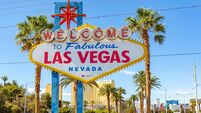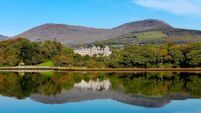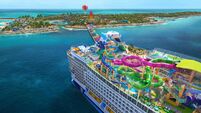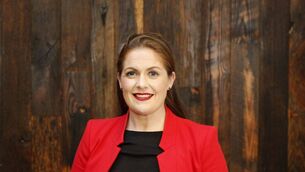The magic of Morocco: How the Northwest of Africa shimmers with lifelong memory
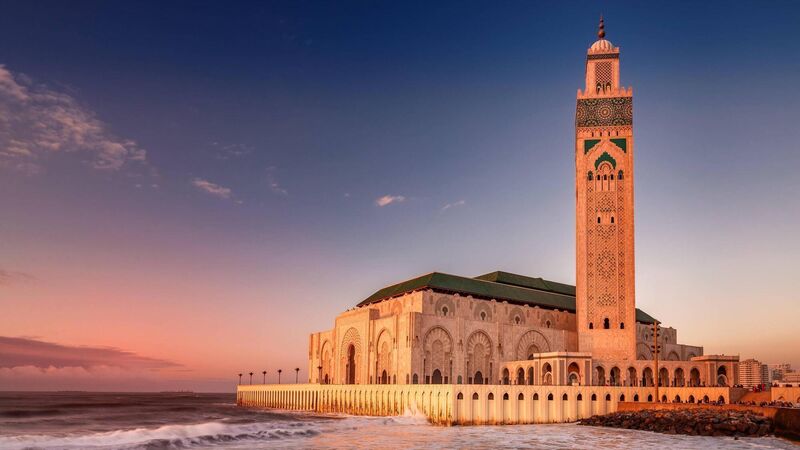
Casablanca's Hassan II Mosque, the largest mosque in Morocco.
Orange, pink, pale blue, white robes.
Richly embroidered kaftans.
Neat, block-coloured, tasselled fez hats.
Blue sky.
We are in Rabat, Morocco. A good choice for winter sun, delivering sand and sea on the north-western coast of Africa, with the fascinating remains of a long and varied history wrapped around a city with modern vibes.

Rabat is the capital of Morocco, and has many signs of its history of occupation going back to the 12th century.
King Mohammed VI, as constitutional monarch and head of state, also serves as the highest Islamic authority — Commander of the Faithful. He holds extensive power; you see echoes of this in developments named after him.
Morocco became a protectorate before gaining independence from the French and Spanish in 1956, when the country changed its name to the Kingdom of Morocco.
The legacy of French colonial rule still lingers, with French spoken widely. I master just one useful word in Arabic — choukran/shukran, meaning thank you — but your Leaving Cert French will serve you well. English is widely spoken in tourist spots.
Rabat city has a seafront with an elegant promenade lined with palm trees overlooking sandy beaches, where windsurfers enjoy Atlantic waves.

White egrets group calmly on roundabouts. There is an extraordinary, tightly packed cemetery with a view of the sea, which contrasts with surprisingly green tranches of trees.
There are forests of white buildings at various stages of development, spurred on by the arrival of the Fifa World Cup in 2030 when Rabat will share the games with Agadir, Casablanca, Fez, Marrakesh, and Tangier.
We feel the obvious police presence everywhere, are warned to watch our bags, and to dress modestly. Maxi dresses are perfect.

Moroccan men wear flowing djellabas (traditional robes), often in white and pale-blue cotton to reflect the heat, with hoods or scarves, over their shirts and trousers.
Women wear them too, as well as more colourful and embellished kaftans. Others, carrying briefcase-sized designer bags, dress in elegant suits with beautifully matched silk headscarves.
They walk confidently, looking like high-end professionals, just as many front-of-house hotel staff members do.
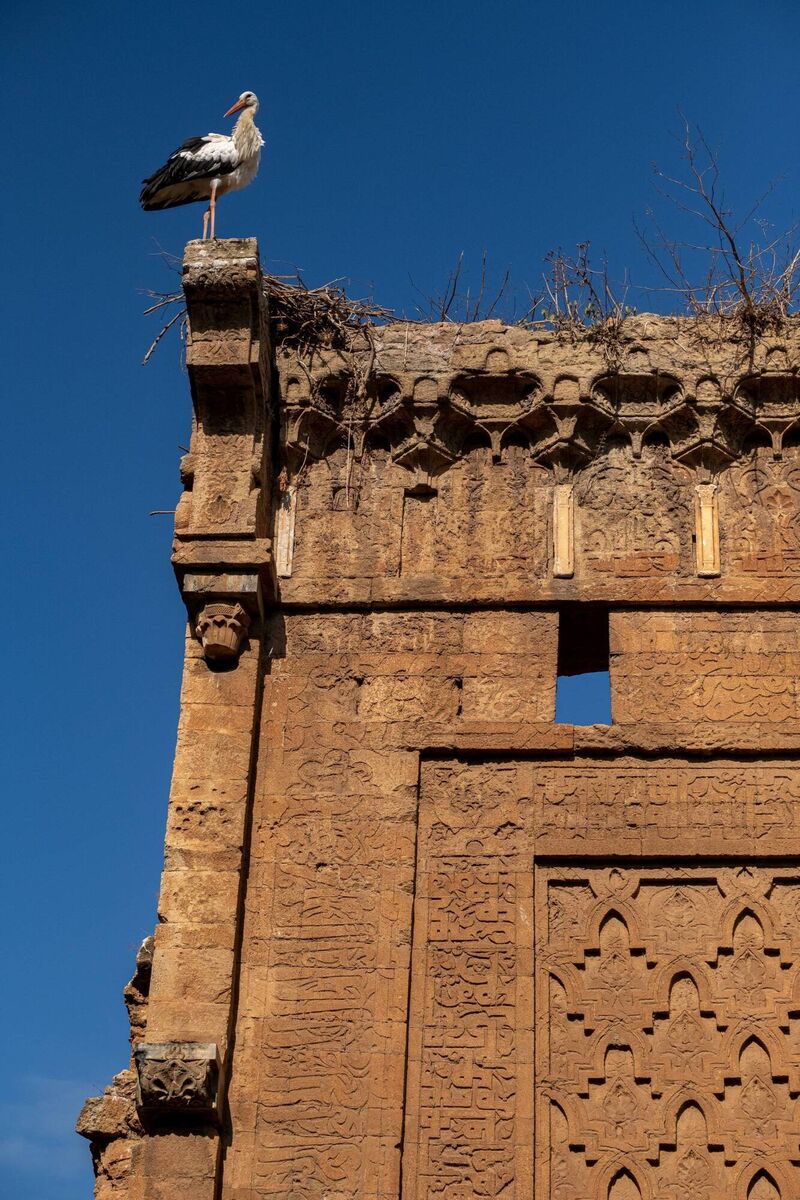
To get a handle on the history of the city, a good first stop is Challah archaeological site, listed by Unesco as a World Heritage Site.
We roam around ruins of pre-Roman Mauritanian eras, Roman and the Islam times in 13th to 14th centuries, when the site became a royal necropolis.
Brick arches reach to the sky, interlinking and throwing dramatic shadows. Storks perch on their nests on top of walls.
Regal in their posture, they make a clacking sound, like castanets. Peacocks strut the paths. And in the botanical gardens, grasses wave in gentle breezes, while many skinny cats bask in the sun.

White uniformed men in green hats on velvety Arab-Barb horses are shaded by arched canopies and stand guard at the Mausoleum of Mohammed V site entrance.
Commissioned by his son King Hassan II as a tribute to the king who helped gain the country’s independence from France, it offers a worthwhile window on the culture.
Inside, handcrafted black-and-white Carrara marble, and patterned tiles, are crowned by an impressive vaulted ceiling.
Stained-glass windows diffuse the light, while colourful flags line the space with three onyx sarcophagi.
King Hassan II and prince Moulay Abdallah lie behind, left and right, at a respectful distance from their father.
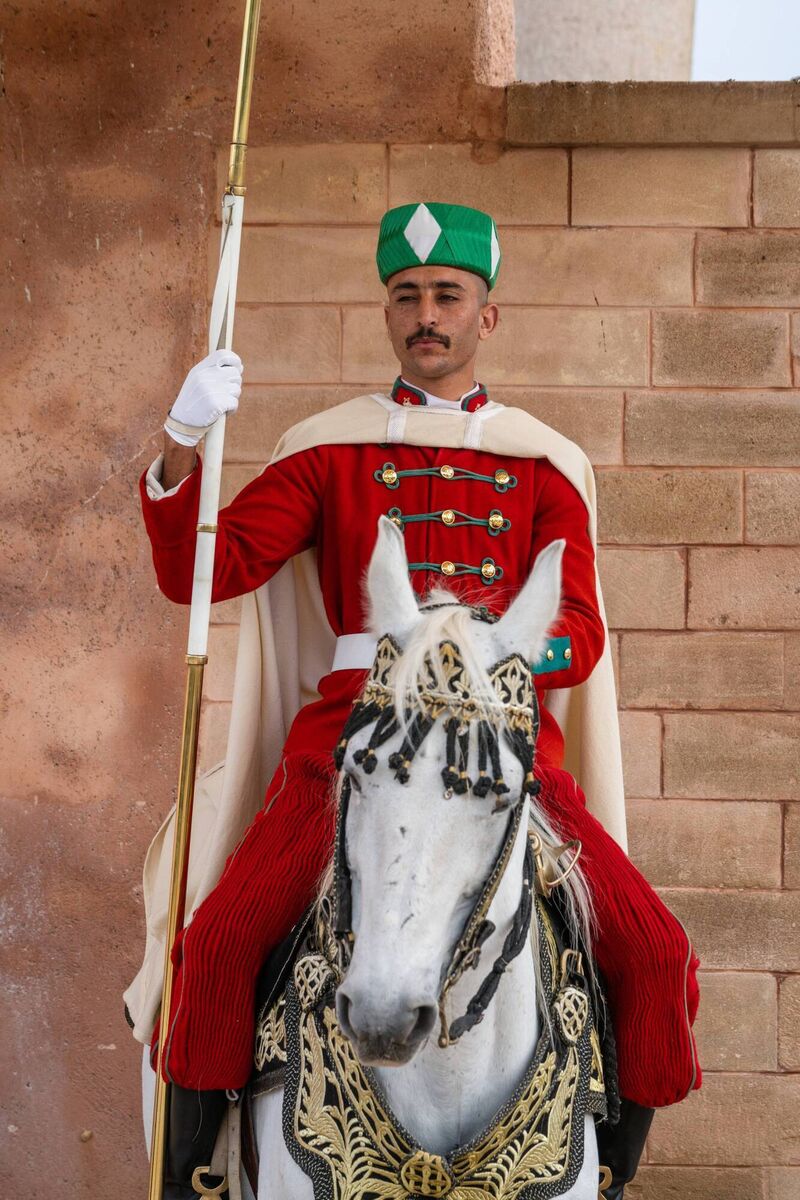
Muslims are buried lying on their right side facing the sacred mosque Mecca.
The acoustics here are good for Qur’an recitations chanted by an imam present during the day, adding a respectful tone.
It’s worth spending time here to stop and think.
Outside, the red sandstone Chellah Hassan Tower and 42 pillars are the remnants of an unfinished mosque destroyed by the Meknes earthquake in 1755.
King Hassan II died in 1999 and, having studied law in France, was responsible for the revival of the Moroccan wine industry. You can enjoy his legacy.
While Muslims don’t drink alcohol, there is plenty available, with especially good ones from Meknes and Domaine Sahari.
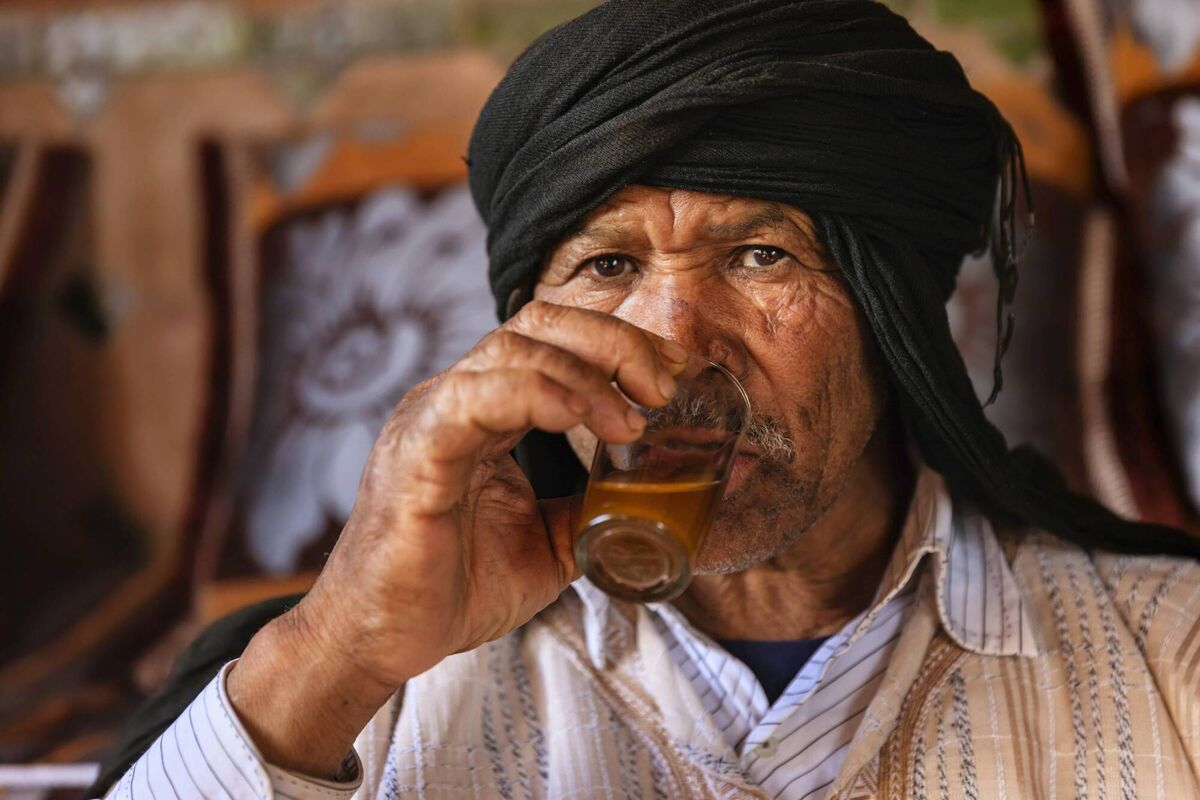
After all that absorbing of history, we take a break for good coffee. If you don’t want it black, ask for nos nos — half milk, half coffee, though they are perfectly familiar with cappuccinos.
Everywhere you will find delicious tea made from freshly picked mint. There are no teabags here.
We don’t wish for a henna tattoo, so don’t allow our hands to be shaken by the local women, who have pots of henna ready to draw on our hand.
A boat trip along the Bou Regreg river, as it meets the Atlantic, brings us close to the Mohammed VI Tower.
The most visible building from every part of Rabat, the 55-storey rocket shape in the commuter town of Salé is across the river, which separates it from Rabat.
More interesting, architecturally, is the Zaha-Hadid-designed Grand Theatre of Rabat. White, curvilinear and sculptural, it is fascinating from every angle, though this and the Mohammed VI Tower are not yet open to the public.
Away from the cityscape, the lagoon is wonderfully calm, rural, and relaxing, offering a pleasant change in pace.
Back on land, the medina is the old, historic walled-in part of the city.
Our guide tells us that a medina always contains five elements: a mosque which flies a white flag at prayer time for the deaf, who cannot hear the muezzin’s call to prayer; a fountain with water available to householders; a bakery for communal cooking; the fourth is a school, la madrasa, which these days includes girls as well as boys aged four to six years; the fifth element is a public shower/bathhouse (hammam), which can include exfoliating massages with a kessa glove — invigorating and available without booking.
There are plenty of shops along the streets to browse in too, although browsing in The National Contemporary Art Museum, with its impressive photography exhibition and interesting textiles, offers shade and calm.
Nearby, the souk is a haven of inexpensive souvenirs.

Rows of shoes and boots, colourful costume jewellery in shiny gold, leather bags, and shirts sit beside stalls with spices, dried herbs, and argan oil. Expect to come across spice markets and rug shops all over the city. Rugs are a good buy in silk, wool, and cotton.
Riads, described as “substantial residences”, form the backbone of the local architecture. We liked the look of Al Bahi Riad de Charme, a former private riad refurbished as a (reasonably priced) hotel. Next time.
Many riads have been converted to restaurants and hotels, with Restaurant Dinarjat an atmospheric outpost, with curving arches, pillars, niches, and colourful tiling. Two musicians on an Arabian oud (like a lute without frets) and a Bendir drum add to the experience.
We feast on traditional food, surrounded by patrons who are mainly tourists. Locals enjoy cooking traditional food at home, so when they go out, they tend to favour European or Japanese styles.
Food in Rabat is very good and can be inexpensive. The traditional tagine cooks food slowly, partly in the steam created by the conical shape lid — try lamb with figs. Pastilla becomes a favourite, the quintessential Moroccan dish made from sweet or savoury fillings in filo-style pastry.
Freshly herbed couscous is a lesson in flavour, and I’m inspired to stock up on ras el hanout, a fragrant seasoning of 12 spices, at the market.
Moroccan breakfast in hotels or street cafes is a lesson in simplicity. Most days we start off with glasses of freshly squeezed juice and plump wedges of local melon, followed by beghrir — fluffy semolina pancakes topped with honey butter. On greedier days, we make room for amlou, a toasted almond, honey, and argan oil, which we spread generously on delicious flatbreads.
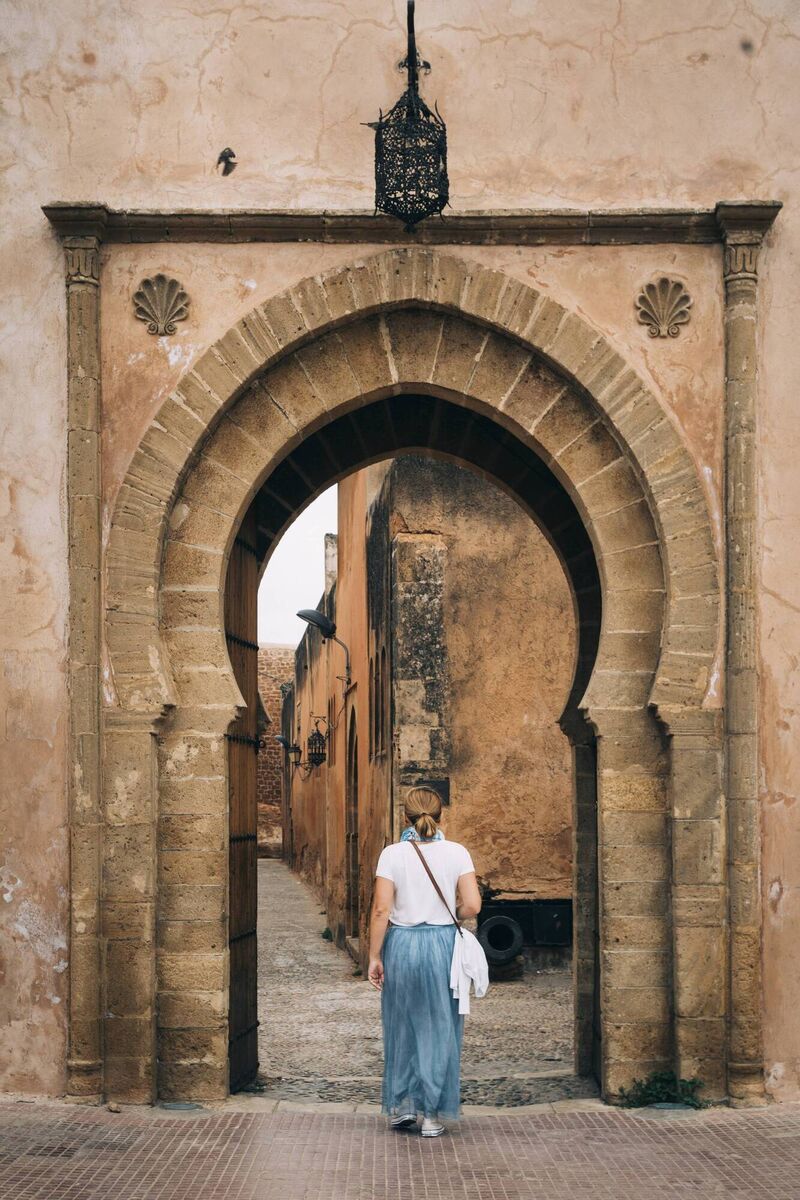
A day trip to Casablanca, an hour south of Rabat, reveals another personality of this North African kingdom. With a population of 4m, twice that of the capital, it offers up a different vibe.
I make my way to the mosque of Hassan II, an impressive marble and granite building, and the only mosque in Morocco open to non-Muslims.
Admission is permitted only through guided tours outside of the five daily prayer times.
We cover our heads and remove our shoes while walking around on the marble floors (bring your socks).
The multi-pillared, multi-chandeliered prayer hall is vast, and separate to the women’s prayer hall.
Standing in the basement ablution halls, we find fountains shaped like giant lotus flowers which spout water for the ritual of wudu — washing before prayers.

For contrast, Patisserie Bennis Habous draws us in with its rows of shelves laden with cakes, biscuits, and savoury treats.
Here, rituals of a different kind take place, as men in white coats carry trays aloft. We pore over twists of pastries, many made with almonds or dusted with rose-scented icing sugar.
Traditional and delicious, they are the ultimate marriage of French and Moroccan cultures.
Despite the pancakes, pastilla and pastries, tea and tagines that have won me over, it’s lunch in Casa-blanca that steals the show.
Sitting at the waterside Le Cabestan Ocean View, overlooking the crashing Atlantic waves, we tuck in to fresh oysters, prawns in garlic, featherlight bread rolls dipped in local olive oil, and John Dory fillets served on perfectly seasoned risotto.
Finishing up with fresh peaches with tiny meringues, and basking in the Casablanca light, it’s hard to believe it’s November.
As winter breaks go, Morocco has been a revelation. I think this is the beginning of a beautiful friendship.
- Roz was a guest of visitmorocco.com
Both Ryanair and Aer Lingus offer twice weekly flights to Rabat from Dublin.
Cash is handy for tips and small purchases in the souk. If you have any left over, you cannot exchange it at home but can use it up in the airport on argan oil, good soaps and body scrubs, chocolate and spices.
Typical accommodation prices in a city centre riad hotel range from €50-€150.
High speed trains with Al Boraq between Rabat and Casablanca take 50 minutes. A very good option for punctuality and comfort. Cost €20-28. moroccotrains.com
The Rabat–Salé tramway is widely used. About 60c per journey. There is also a bus network.
The small city taxis (petit taxi/taxi saghir in Arabic) in Rabat are blue, and in Casablanca are red.
Petits taxis can be hailed on the street and they are good for inner-city metred journeys – it’s illegal for drivers not to turn the metre on, so ask that they do, and if they refuse, get out.
Admission to the Mausoleum of Mohammed V, is free of charge. Open daily 8am to 6.30pm.
Cost of tour in Hassan ll mosque is around €14. Times vary by the day. fmh2.ma
Mohamed VI Museum of Modern and Contemporary Art. 2 Avenue Moulay Hassan, Rabat. Admission about €4. Open Wednesday to Monday 10-18.00pm
Enjoy a boat trip in Rabat with Yacht Club; leyachtclubrabat.com
Restaurant Dinjarat. 6 Rue Belgnaoui Laalou Medina, Rabat; restaurantdinarjat.com.
Restaurant Le Cabestan Ocean View, 90 Boulevard de la Corniche, Phare El Hank, Casablanca; le-cabestan.com.
Pâtisserie Bennis Habous 2, Rue Fkih El Gabbas, Casablanca 20100, Morocco
- Plan your trip at visitmorocco.com






